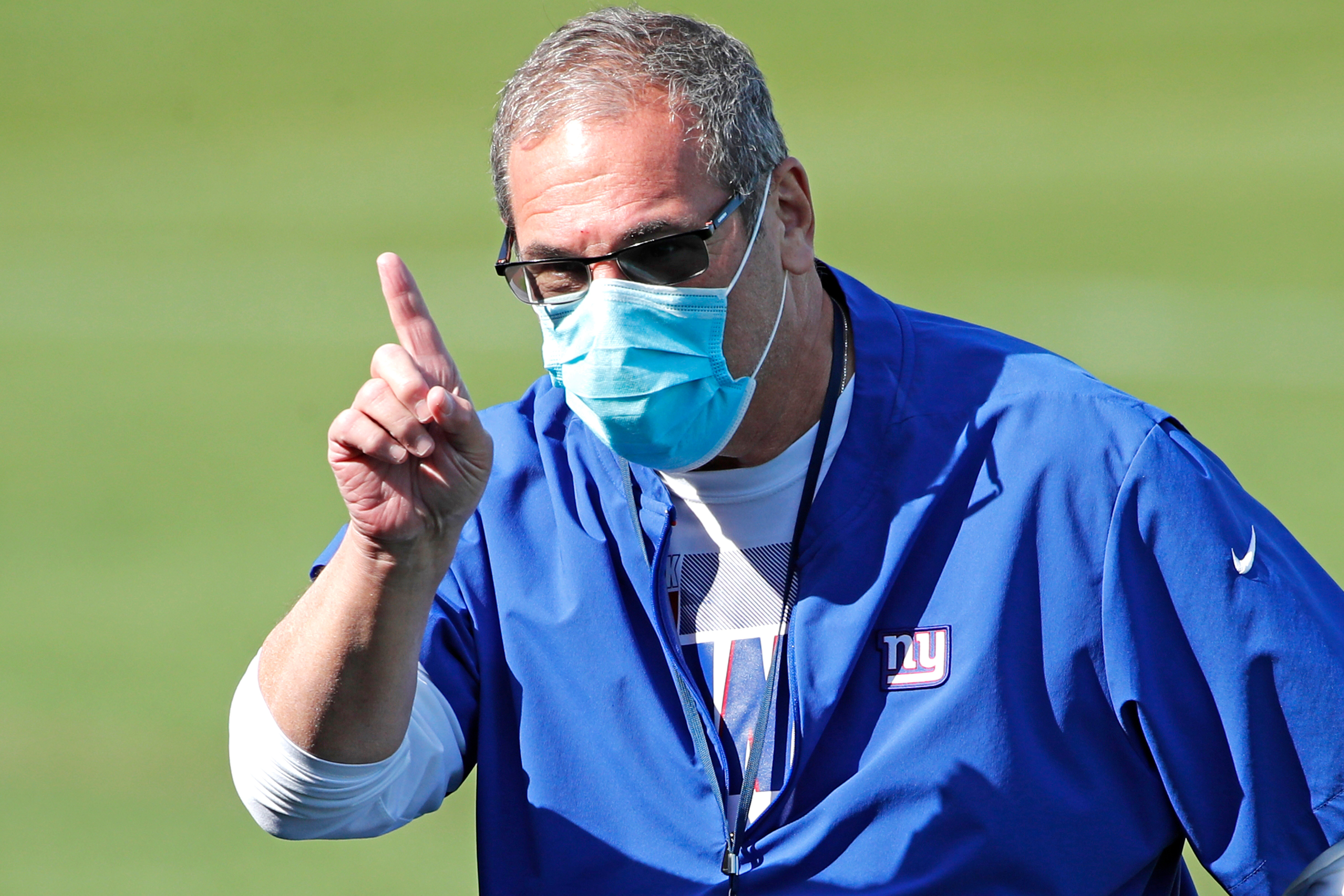More On: dave gettleman
Giants’ Dave Gettleman: ‘An important year’ for Daniel Jones
Dave Gettleman’s bold NFL Draft moves reveal his Giants plan
Giants have moved closer to being an NFC East favorite
Elerson Smith is Giants’ next hope to break their NFL Draft pass-rusher jinx
Azeez Ojulari is Dave Gettleman’s surprise NFL Draft trade prize
Is this the year Dave Gettleman, for the first time in his nine years as an NFL general manager, trades down in an NFL Draft? It might make sense, for a variety of reasons. The Giants
Is this the year Dave Gettleman, for the first time in his nine years as an NFL general manager, trades down in an NFL Draft?
It might make sense, for a variety of reasons.
- The Giants own the No. 11 overall pick, a spot in the first round where they likely will have a cluster of three or four players with similar grades, allowing them the option to move down a few spots and still get a player they desire, while also adding draft capital, in the form of a coveted extra second-day pick.
- There might not be a defensive player taken in the first 10 picks, meaning the Giants can move back a few spots and land their top-rated edge rusher, certainly a position of need.
- Given the expenditures in free agency at a time when the salary cap made an unprecedented dip, it makes financial sense to gain an extra pick on the second day of the draft, adding value and cheap labor to the roster for this season and also 2022, a year when the Giants could be in salary-cap distress.
“Everything we do has an immediate and one, two, three-year horizon and we’re always mindful of how things impact us today and how it impacts us next year and beyond,” Kevin Abrams, the Giants assistant general manager, said Tuesday. “We’re very cognizant of all those variables.”
Abrams, also the Giants’ chief contract negotiator, admitted he did “probably a few cap practices that we normally try to avoid” during this free agency cycle, back-loading and adding voidable years to contracts in a spending spree designed to immediately upgrade the talent level on the roster. The results were eye-catching. Abrams worked mega-deals for wide receiver Kenny Golladay (four years, $72 million) and cornerback Adoree’ Jackson (three years, $39 million) while also adding tight end Kyle Rudolph and running back Devontae Booker. Not to be forgotten, the Giants also opened the vault on a three-year, $63 million extension for defensive lineman Leonard Williams.
“I feel like our roster is a lot better now than it was at the end of the season and the offseason is not over yet, so we’ll have more opportunities to add players,” Abrams said. “I think we feel good with what we’ve done. I think we’re a deeper, more talented team.”
Gettleman said he is confident the first portion of the player procurement process delivered the desired goods.
“It’s not going to be quantified until the fall and we start playing in September but we feel very good about what we’ve done, we feel very good about the direction the team has taken,” Gettleman said. “We really feel we’re building a solid football team that the fans can be proud of.”

Next up: The 2021 NFL Draft. The Giants at present have only six picks — one apiece in the first four rounds, none in the fifth round, two in the sixth round and none in the seventh round. They would like to add at least one pick and a trade down is the way to do it. Of course, they must locate a partner. Would the Patriots be willing to move up from No. 15 into the No. 11 spot, perhaps to take a quarterback? In 2018, the Raiders moved up from 15 to 10 in the first round and gave the Cardinals two additional picks, one in the third round and another in the fifth.
The way it stands now, the Giants own the No. 116 overall pick in the fourth round and then do not have another selection until No. 196 in the sixth round. That is a long time to go watching players come off the board.
An extra pick gives the Giants an extra rookie contract, good for four years at a team-friendly price. As a result of the global pandemic, the 2021 cap is $182.5 million, a drop of $16 million from 2020. Gettleman and Abrams, with the blessing of ownership, were able to spend freely in free agency. The salary cap in 2022 might not rise above $200 million but, with new television money coming in, could expand as high as $230 million in 2023.
“I think 2022 could be a little bit of a challenge, depending on where the cap goes to,” Abrams said. “Beyond, I’m more optimistic that nothing we’ve done last year, this year puts us in any kind of precarious position. We’ll see.
“It could depend on science and state legislatures and fans in stands and a lot of other variables that we’ll see how it goes. But I don’t think we’re in a bad spot cap-wise but next year could be a little more challenging than probably the years after that.”
This story originally appeared on: NyPost - Author:Paul Schwartz






















